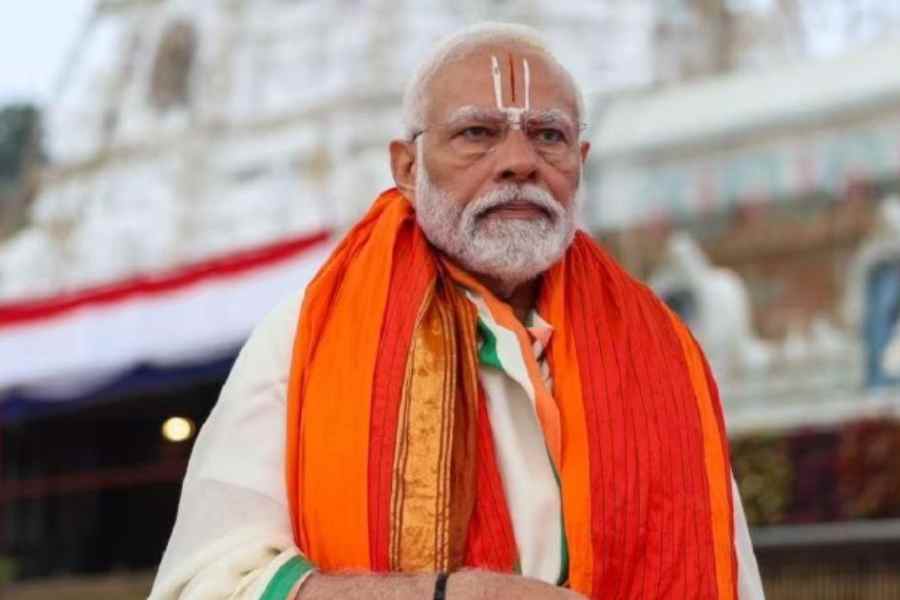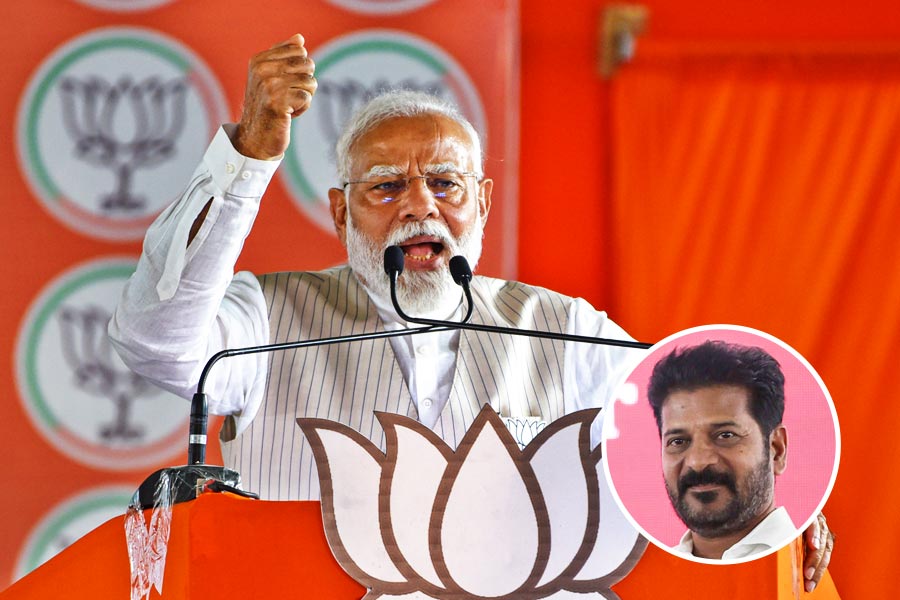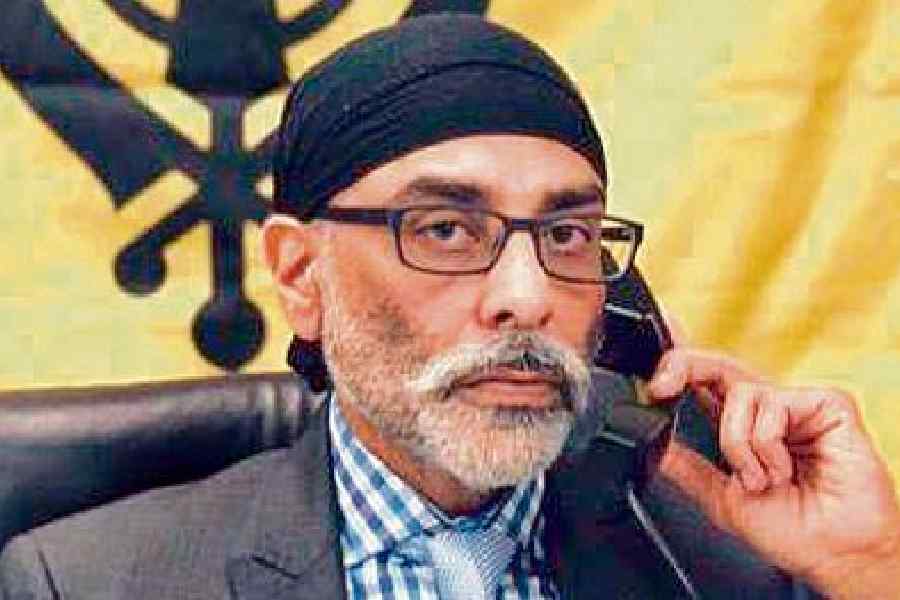The time has perhaps come — or has it already passed, who can tell, on ground slipping by so swiftly underfoot? — for us to ask a couple of simple but blunt questions of ourselves: who are we, and what do we believe this collective of ours we call India that is Bharat should be? Is there even consonance between the entity called India and the entity called Bharat? Can one be treated as a synonym for the other, or a translation? Or is one becoming lost to the other in ways that should be reason for alarm?
But do we even sense cause for alarm or is this an acceptable — or even proactively invoked — drifting apart of essential notions of who we are? We are in the throes of a seminal separation, such that we are unable or even unwilling to talk to each other, such that we are unprepared to hear the other out, such that the other may no longer be an entity of engagement but, rather, of enmity. We may have wanted — as should happen in civilised pluralities — to be in conversation. We are, instead, in collision, and apparently quite at ease being so. Jawaharlal Nehru was never so blithely knocked and mocked by a successor prime minister as today. Mahatma Gandhi never so widely demonised and his assassin never so unabashedly propitiated. The nation of their imagining and crafting seldom so disdained and debunked.
But we’ve proceeded from there, to stations where the rampant disdaining and debunking of India (or Bharat, but which India and which Bharat, the same thing or quite separate things?) pass sans remark and we become inexorably the antonym of what we had set out to be, and remain pledged by dint of allegiance to the document we call our Constitution.
A single issue and its many enactments over the decades until its denouement last month should serve as sufficient illustration. On August 5, 2020, Prime Minister Narendra Modi audaciously revealed to the nation from Ayodhya the prologue to a radical shift. It was a carefully chosen date, the first anniversary of a previous trigger in his scheme of therapy — the diminution and division of the state of Jammu and Kashmir, the scrapping of the flaky and delusional constitutional privileges it remained adorned with. That one act brought on a phosphorescent powder flash of ability we may have never thought we possessed — the ability to rejoice the ravages wreaked upon those we call, for lack of credible alternatives, our own. Indians have seldom celebrated the tragic trussing of other Indians like they did following the abrogations of August 5, 2019 in Kashmir. Modi moved on from there, probably doubly inspired, to the two-part consecrations of Ayodhya — the foundation in 2020, and the finishing last month. And in doing so, he unveiled the absolute amalgamation of Church and State, a devotee nation whose decreed chief deity would henceforth be Lord Ram. Only the batty wouldn’t see that what many believe to be an act of devotion was also an act of conscription, of the enlistment of divinity in the platoons meant to wage the campaign this coming summer.
It may not be entirely moot what this stimulation of religious giddiness means for the 2024 general elections; the Bharatiya Janata Party’s numerical fortunes have clearly profited from its spearheading of the Ramjanmabhoomi movement. Under Modi, the shoring up of sentiment and its electoral translation has been as robust a project as it is unabashed. But the meaning of Ayodhya is far deeper and more consequential than merely the fortunes to be won in an election. On both his Ayodhya appearances — telecast live to whoever wished to tune in — Modi wore the aura of raja and rishi combined. When he spoke, having sat over the pran pratishtha rituals of the Ram Lalla idol under the central dome of the new temple, it was often not clearly manifest that he was also elected head of a secular and vastly pluralist country, and that he not only swore allegiance to a secular Constitution but on occasion also placed his forehead to. But Modi wasn’t playing on keeping the audience confused; his clarity was crystal of quality — he is, as loudly as he can proclaim himself, Hindu hriday samrat. “This is not just a divine temple,” he would say, “It is a temple of India’s vision, philosophy and direction. It is a temple of national consciousness in the form of Ram.”
He proceeded to prescribe to the country its new ethos and code of ethics. “Ram is the faith of India, the foundation of India. Ram is the thought of India, the law of India. Ram is the consciousness of India, the contemplation of India. Ram is the prestige of India, the might of India. Ram is the flow, Ram is the confluence. Ram is the norm and Ram is the policy.” The prime minister did refer to the Constitution in the Ayodhya context, but only as attestation of (his) faith. “In India’s Constitution, in its first copy, Lord Ram is present. Even after the advent of the Constitution, legal battles over the existence of Lord Shri Ram continued for decades,” Modi said. “I express my gratitude to the judiciary of India, which upheld the dignity of justice. The temple of Lord Ram, synonymous with justice, was also built in a judicial manner.” It perhaps deserves mention that in unanimously granting the once-disputed site at Ayodhya for the purposes of the Ram Janmabhoomi Temple, the Supreme Court had also called the demolition of the Babri Masjid on December 6, 1992 an “egregious violation of the rule of law.”
That was an act that, in the words of Rajju Bhaiya, a former head of the Rashtriya Swayamsevak Sangh, ran against the “Hindu ethos”. That was an event that, in the words of the late prime minister, Atal Bihari Vajpayee, should never have happened. December 6, 1992 was, in the words of Lal Krishna Advani, just recently awarded the Bharat Ratna, “the saddest day of my life.” All three of these men are Narendra Modi’s elders in more ways than one. He has walked away from all, away from attempts at conversation, towards collisions. He represents a radical revision on his ideological predecessors, far more atavistic in his belief system, far more determined to push on with them. He is going about — the metaphor of the sengol in hand — as a man possessed of the notion that he has been appointed to an hour. This hour is asking questions of us: who are we? What do we wish to become? What do we wish to embrace, what do we wish to eschew? The answers are not blowing about in the wind. They have been a storm around us for a while; we are either afraid to give it a name or have our heads dug into the sand.
sankarshan.thakur@abp.in










